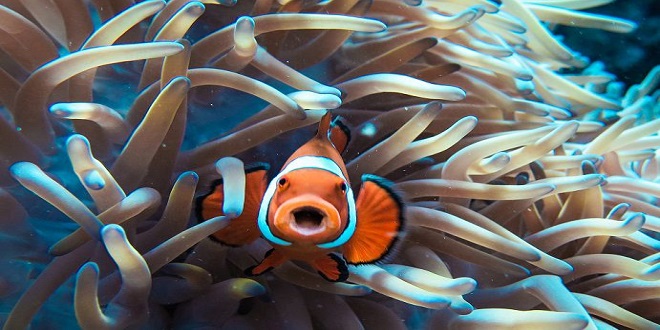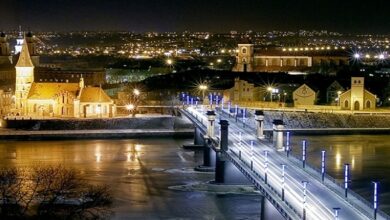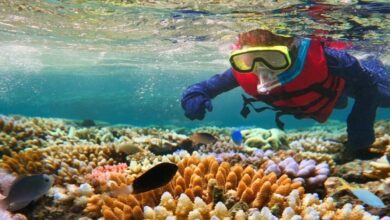6 MORE DIVING SPOTS TO RIVAL THE GREAT BARRIER REEF

Tufi, Papua New Guinea
Papua New Guinea is one of tourism’s last frontiers. Many areas of the country, it is said, have never been visited by Westerners. The village of Tufi sits on a rugged, fjord-like coastline, its dive center nestled in the crook of an inlet that was used for decades as a rubbish dump. It doesn’t sound alluring, but this mucky environment attracts unusual creatures that use the discarded objects as camouflage. Blennies retreat inside old cola bottles, harlequin shrimps hide beneath rusting 40-gallon drums, and hairy robust ghost pipefish mimic red algae as it grows on ageing driftwood. At a depth of 148 ft (45 m) you’ll also see an intact torpedo and a shell gun – reminders that this was an American forces station during World War II.
Gulf of Aqaba, Jordan
The city of Aqaba sits at the top of Jordan’s small share of the Red Sea coast, but drive a short way toward the Saudi border and you’ll find pretty and uncrowded coral reefs that run right up to the shore. “Bommies” (coral outcrops) decorate the sand here like flowerbeds. Anthias, damselfish, and lionfish are common sights, while prehistoric slipper lobsters are more unusual. The wreck of the cargo vessel Cedar Pride, which sank in 1982, adds a fascinating dimension to diving in the area. And for those who like a dash of ancient history to balance their days at sea, no place is quite like Jordan. Emerge from the reefs at the top of the Gulf of Aqaba and head inland to the rose-red city of Petra – the perfect foil for the underwater realm.
Lighthouse Reef, Belize
Lighthouse Reef’s famous Blue Hole, explored by Frenchman Jacques Cousteau on his Calypso expedition of 1972, is the jewel in Belize’s diving crown. This barren circular tunnel, which drops to a depth of 1,475 ft (450 m), has stalactites hanging from a shelf at 130 ft (40 m), indicating that it was once dry land. The only fish you’ll see are reef sharks and groupers, but venture into other areas and you’ll find livelier spots, where bottom-feeding rays dwell in sandy lagoons, pastel-toned sea plumes cover the raised barrier reef, and pelagic species, including turtles, patrol the steep walls.
Banda Islands, Indonesia
The Banda Islands, at the center of the Spice Islands, were long fought over for their wealth of nutmeg, once worth far more than gold. This small brown nut is still the lifeblood of the islands, but running a close second are its dazzling coral reefs, which have long been protected against marauding fishermen. When you descend through the warm, clear water, swim to the edge of the sheer wall and look down into the abyss, you won’t see far. Blocking your view will be shoal after shoal of colorful fish darting around in ribbon-like waves, like a bizarre three-dimensional screensaver. Indian Ocean triggers occupy the top layer, pyramid butterflies sit below, and rainbow runners beneath them. Don’t miss the fan corals, lower down the wall, which dwarf divers, or the harbor, famed for its rare bottom-dwelling creatures.
Pemba, Tanzania
A little piece of Africa that time almost forgot, Pemba was once a spice-growing center run by the Sultans of Oman. Today, the island is known for its clear water and vibrant marine life. Its east coast, which drops away sharply from mangrovelined shores, has deep walls. Strong currents on this side might restrict the growth of corals, but they also attract big pelagic species, such as grey reef sharks and hammerheads. On Pemba’s west coast, which is much calmer, you’ll find masses of tiny islands that create nooks and crannies for divers to explore. The coral here is richer and larger, and the reef fish more plentiful. To the south of the island lies the eerie but well-preserved wreck of a steam freighter that sank in a storm in 1967.
Blue Corner, Palau
In ancient times a matrilineal society regarded as one of the wealthiest in the Pacific, Palau is today a magnet for those few divers who are prepared to travel a long distance for their sport. And often they come just for one very famous dive known as Blue Corner. Strong currents sweep up a perfectly vertical wall to a flat reef top where guides position divers, who hover above the reef using specially designed hooks that attach to rocks or rubble. It can be a battle staying still in these currents – a challenge that doesn’t seem to affect the massive numbers of fish that come to the wall to feed. Huge schools of barracuda block the sunlight as they approach. They are followed by even larger schools of jacks, while gray reef and whitetip sharks patrol just below, waiting for an easy meal.





